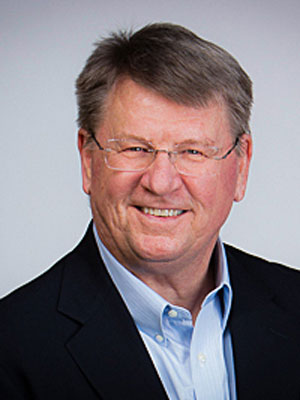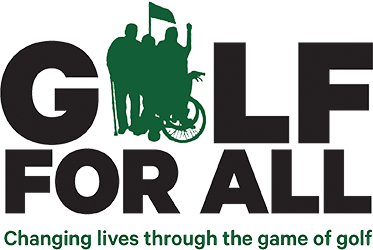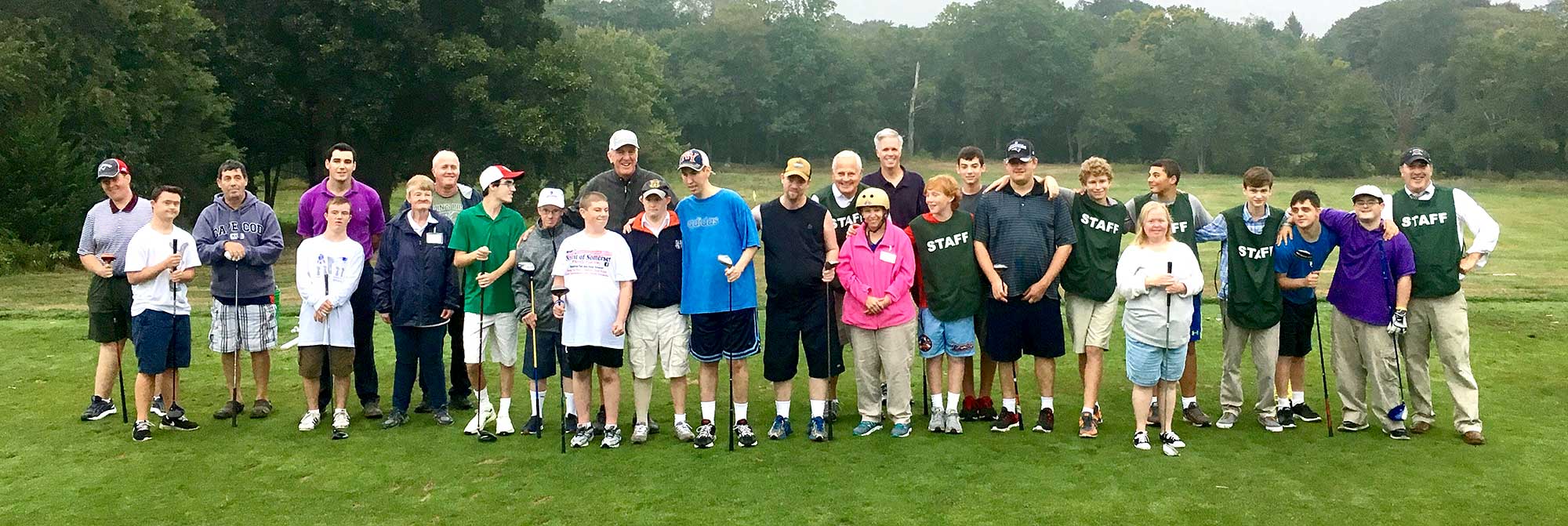As he plays through his misfortune, Randy Rogers proves an inspiration.
What if by some horrible misfortune, golf as you knew it were to be taken from you – for example, one of your limbs were to no longer work and you struggled with your balance. What would you do? Could you dig deep enough for the strength, the passion, and the commitment to play on?
Would you have it in you?

Lord willing, you will never have to find out. But in a world filled with people with disabilities who do play, this is a story about a man of enormous fortitude. A man named Randy Rogers who faced a reality that can only be described by Mike Gibson as “getting hit in the head with a shovel” and persevered.
Gibson is part of Rogers’ story, and so are Bob Beach and Phil Psaros. Small parts, they tell you. Huge parts, Rogers insists. Humility, you see, is at play in this story, but the theme is clear: Randy Rogers is an inspiration.
His stroke took place nearly 16 years ago and there probably isn’t a minute that goes by when Rogers, now 64, doesn’t give thanks to still be sharing life with his wife, Anne Marie, his two daughters, and three grand-daughters. “A lot of people think I’m lucky to be alive,” said the retired CPA.
A lot of people who know him also know how golf factors into his post-stroke life. “I would say golf saved me. If I didn’t have golf, I’d be sitting around (feeling sorry) for myself,” he said.
It is not golf as he once knew it, those days when he was a 4-handicap, a strong man with a polished enough game to be club champion at Brae Burn CC in 2004, to be a qualifier for the State Mid-Am, to be a fixture in the Thursday night Met League.
But in some ways, Rogers presently represents the essence of golf. That’s because while he can only use his right arm and a solid shot won’t travel where it once did, when Rogers is on the golf course he savors the smell the grass, the camaraderie of friends, and a perspective that is allowed some leeway for his competitive spirit.
True, he accepts that he can’t return to the days of championship tees and rounds in the 70s. But that isn’t to say that he wasn’t determined to do something about the 36-handicap he got assigned on his return to the game.
“It took me about three years to get the courage to play and my wife was a huge part of that. She’s a speech therapist, but she’s my sports psychologist, too,” laughed Rogers. “I’ve worked hard. I’m now a 26.4, but I think I can be decent again.”
His fan club is convinced that Rogers already has achieved success and they’re not surprised. Beach, for instance. He met Rogers within two months of the stroke back in 2006, connected by a posting on the wall at the Braintree Rehabilitation Hospital.
“All I could think about (in those days after the stroke) was the first tee,” said Rogers. “I saw the flyer with Bob Beach’s name, I went to see him because I wanted to know, ‘Can I play again?’ ”
A prince of a PGA Professional who devotes his expertise to helping golfers within every adaptive category, Beach needed just one lesson with Rogers to proclaim success.
“He figured it out,” praised Beach. “He gets it.”
Rogers’ next stop was Harmon Golf & Fitness Center in Rockland, where he knew he’d find a soul mate in Mike Gibson, a terrific teacher and even better human being.
“How do I do this?” Rogers asked, indicating that he wanted to somehow get his left arm to help hold the club.
Gibson, who lost his left arm in a boating accident as a kid, shook his head. Then he moved Rogers’ left arm out of the way.
“You’re going to swing one-handed,” said Gibson, who proceeded to paint a baseball picture that Rogers comprehended.
“He told me to aim to right field and to hit to second base,” Rogers said, repeating a mantra that has stuck with him for more than 15 years.
“You’re going to be OK,” Gibson told Rogers and 16 years later it is impossible to overstate just how much comfort and confidence those five little words provided.
Now with the Titleist Performance Institute in Carlsbad, Calif., where he is a Preferred Player Promotions Manager, Gibson connects occasionally through Facebook with Rogers and relishes the bond.
“He stood out,” said Gibson. “People like Randy have a voice. People look up to him. He’s very genuine.”
Buoyed by the golf wisdom Beach and Gibson had provided, and by the emotional support of Anne Marie and his daughters, Rogers said that when he finally returned to Brae Burn he discovered a bonus. Psaros, the head professional, was cut in the same mold as Beach, for whom he had worked years earlier.
“He was an inspiration to everybody. It was phenomenal to see him out here,” said Psaros.
“A couple of years ago, Randy and his team won their flight in the Men’s Invitational. We all root for him, but he’s not looking for any charity cases. He’s still Randy. He’s a competitor.”
That competitive side was ignited when Rogers heard that the U.S. Golf Association this summer will put on the first-ever U.S. Adaptive Open at Pinehurst, N.C. Competition will be held in eight categories – arm impairment; leg impairment; multiple limb amputee; vision impairment; intellectual impairment; neurological impairment; seated players; short stature.
Having gathered the necessary papers to prove his medical condition and golf index, Rogers officially entered the qualifying process. The field will be chosen by a selection committee and announced May 18.
He’d love to be part of this historic championship, most definitely, but Randy Rogers won’t be defined by whether or not his entry makes the field. Fact is, golf has helped him move mountains, ignite inspiration and remind us that this greatest of all games belongs to all.
Championship qualities if you ask me.
Reposted from the Power Fades newsletter.


My name is Mark Halvorsen Traumatic brain injury survivor Navy veteran and Brain injury advocate. I salute what Bob Beech has done with his adaptive stroke survivor golfers.